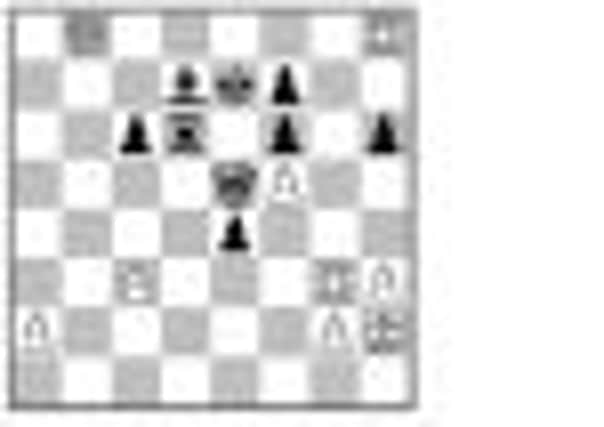Chess: How should Black continue?


IN the 1960s and 1970s, there was Fischer fear. The American’s intense eyes, long arms, talon-like fingers and air of effortless superiority overawed many opponents. Come the 1980s, and Kasparov fear took over. The Russian’s hostile glare, ready sneer, huge opening knowledge and instant tactics terrorised normal grandmasters.
Now we have Carlsen fear. While Magnus Carlsen’s histrionics are limited to a grouchy slouch, there’s no doubting opponents are overpowered by his presence and too readily resign. A classic case came in the opening round of the London Chess Classic, as England’s David Howell, after making many “only” moves through the assault on his king, and being one move short of the time control, and with only seconds left on his clock, psychologically convinced himself he was simply being mated by the world No 1, so he played the worst-possible move: he resigned!
Advertisement
Hide AdAdvertisement
Hide AdBut surprisingly, not only Howell but also Carlsen himself believed white was mating – and neither saw until after the game that all black had to do (from today’s diagram) was play 40 ...Qxf5! and it is far from over, though white is still better.
After two rounds, Carlsen – who also survived a seven-hour epic against Luke McShane, to salvage a draw – joins rivals Hikaru Nakamura and former world champion Vladimir Kramnik in the joint lead on 4/6 having all won and drawn their first two games.
N Short - V Kramnik
3rd London Chess Classic, (2)
Four Knights, Rubinstein variation
1 e4 e5 2 Nf3 Nc6 3 Bb5 Nf6 4 Nc3 Nd4 5 Nxd4 exd4 6 e5 dxc3 7 exf6 Qxf6 8 dxc3 Bc5 9 Qe2+ Qe6 10 0-0 0-0 11 Qf3 d6 12 Bg5 Qf5 13 Be7 Qxf3 14 gxf3 a6 15 Ba4 b5 16 b4 Re8 17 Rfe1 Bb6 18 Bb3 Bb7 19 Kg2 d5 20 Re5 c6 21 Rae1 Bc7 22 R5e2 Bc8 23 a4 Bd7 24 Bh4 Rxe2 25 Rxe2 Re8 26 Rxe8+ Bxe8 27 Bg3 Bd8 28 Be5 f6 29 Bb8 Bg6 30 axb5 axb5 31 Kf1 Kf7 32 Ke2 Ke6 33 Ke3 Bb6+ 34 Ke2 Bh5 35 Ba2 g5 36 Bb3 f5 37 Ba2 f4 38 Bb3 Kf5 39 Bd6 g4 40 Kf1 g3 41 fxg3 fxg3 42 Bxg3 Bxf3 43 Ba2 Be3 0-1